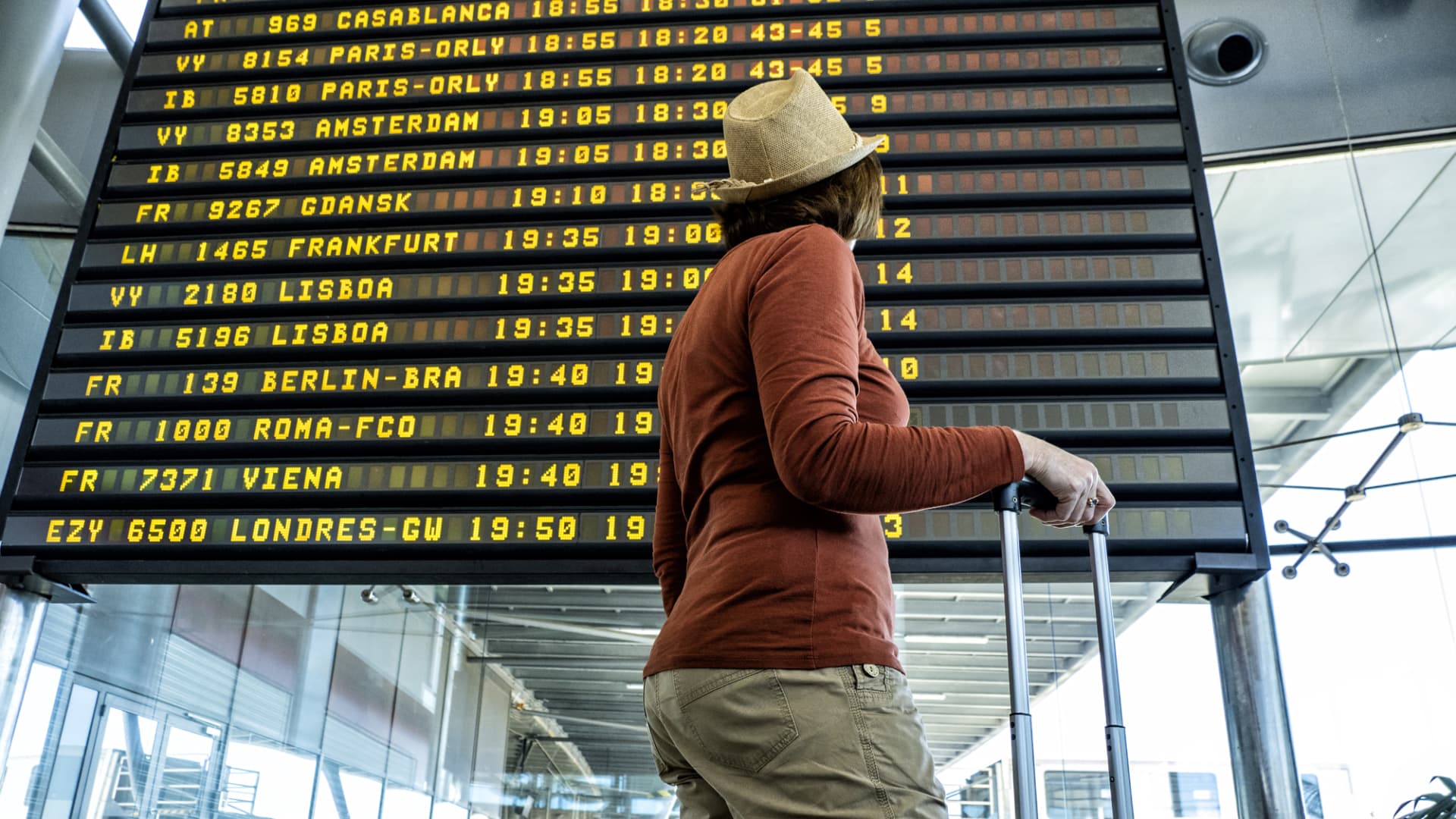Airfare to Europe hit an all-time high this summer. But those dissuaded by the sticker shock can still travel overseas in coming months and cut costs by perhaps hundreds of dollars a ticket.
Flying to Europe from the U.S. during the fall “shoulder season” — in September and October — instead of in the summer will save the average traveler $500 per round-trip ticket, according to data from Hopper, a travel app.
Europe is the most popular overseas destination for U.S. tourists this summer. But travelers to top European cities would save 34%, on average, by going in the fall instead of June, July or August, Hopper found.
More from Personal Finance:
Canceled or delayed flight? What to know about your rights
U.S. passport delays may be months long
Travel to Europe is no longer a ‘screaming, bargain-basement’ deal
Consider these examples: Airfare to Rome is $1,284, on average, this summer. It’s $736 this fall, a 43% reduction, or $548 of savings per ticket.
Likewise, those venturing to London would pay $693 in the fall, 32% less than summer’s $1,025. In Barcelona, visitors would fly for $757 in the fall, versus $1,193 in the summer, a 37% savings.
“There is some good news in sight,” Hayley Berg, Hopper’s lead economist, said of prices.
Shoulder season is generally a less expensive time to travel. But the savings may be especially noteworthy to prospective buyers due to recent nosebleed costs, experts said.
The price dynamic is guided by supply and demand: Fewer people typically travel in the fall, as kids return to school, for example.
That also means not everyone — such as families with kids, or workers such as teachers whose vacations revolve around summer months — may be able to take advantage of a bargain.
But those who can travel during the shoulder season would likely get a better overall experience due to milder weather and reduced crowds, said Sally French, a travel expert at NerdWallet.
Costs to travel abroad have soared in 2023 as people who put off international trips during the Covid-19 pandemic indulge their pent-up wanderlust. There has been historic demand for passports and applications for federal travel programs such as Global Entry.
Many Covid-era restrictions have eased, making it easier to go overseas. For example, the U.S. ended a testing requirement for international travelers in June 2022.
Some countries’ borders were still closed last summer, especially those in Asia. Now, just seven nations have some kind of travel restriction in place for vaccinated American travelers, according to Kayak. For unvaccinated American travelers, the number rises to 23.
“This is the first year people don’t have many Covid requirements at all,” French said.
As a result, summer 2023 is the most expensive time on record to travel to Europe, Hopper said. The average ticket costs about $1,200, eclipsing the previous high in 2018 by $50 a ticket.
In Asia, the No. 2 most-popular destination for Americans, average prices are 64% higher than pre-pandemic levels, Berg said.
It’s not just airfare. Staying at a European hotel this summer costs $205 a night, a 37% increase from last year. Cities such as Rome and Madrid have seen prices jump 63% and 41%, respectively, over the last year, Hopper said.
Price doesn’t seem to have dissuaded travelers, in the aggregate, from travel abroad, however.
That makes sense from a money standpoint. The typical American tourist going abroad tends to be wealthier — with an average household income of $110,000 relative to $83,000 for all travelers — and much more optimistic about their personal finances, spilling over into a greater willingness to spend on leisure travel, according to a recent poll by Destination Analysts, a tourism market research firm.
Aside from traveling during the off-season, here are some general tips from travel experts on finding a good deal.






